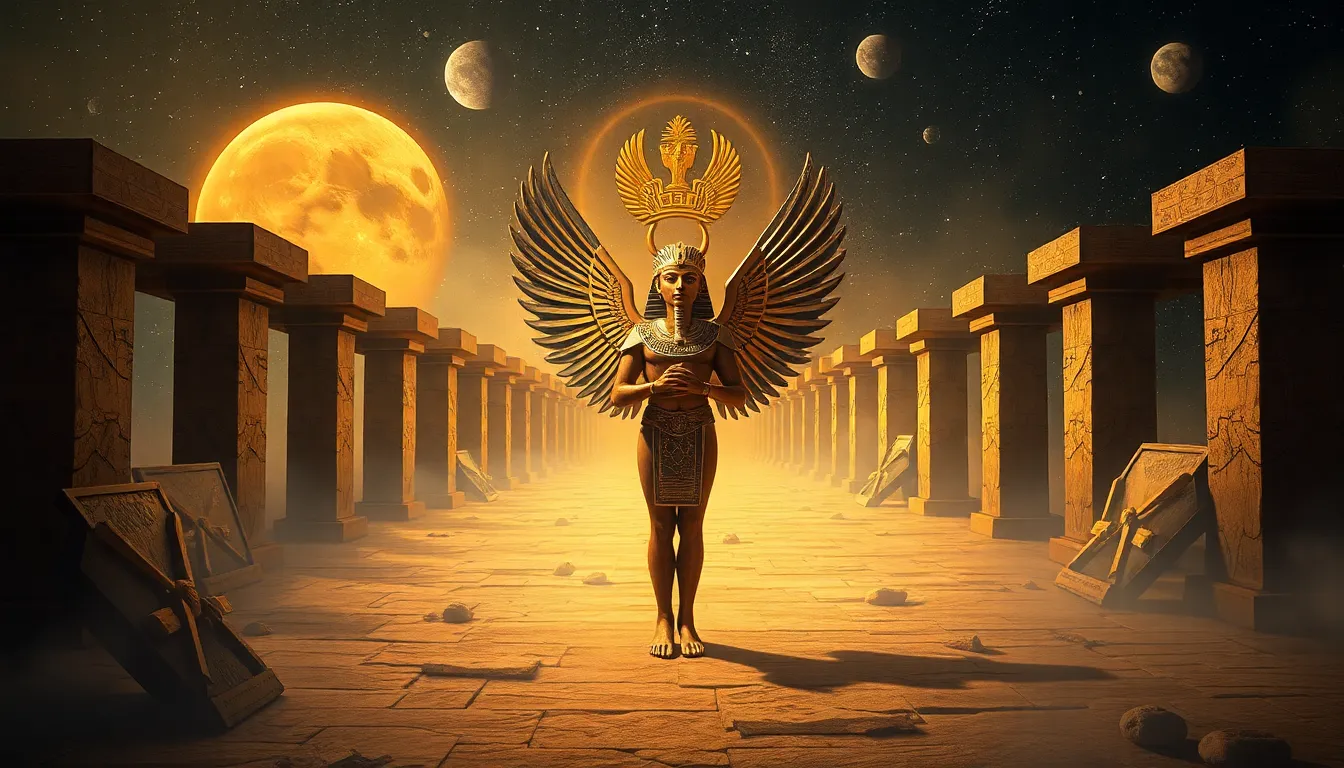Exploring the Afterlife: Egyptian Myths That Shaped Beliefs on Death
I. Introduction
The ancient Egyptians had a profound belief in the afterlife, which was intricately woven into the fabric of their culture. The concept of life after death was not merely a comforting idea; it was a critical aspect of their religious and social systems. This belief system influenced their art, architecture, and daily lives, as they prepared for a journey beyond this world.
Key themes and motifs in Egyptian mythology related to death include the eternal cycle of life, resurrection, and the importance of moral integrity. These themes shaped how the ancient Egyptians perceived their existence and the universe around them.
II. The Concept of Ma’at: Order and Balance in Life and Death
At the heart of ancient Egyptian belief systems lies the concept of Ma’at. Ma’at represents truth, justice, and cosmic order. It was believed that maintaining Ma’at was essential for the harmony of the universe and the well-being of society.
Ma’at influenced views on morality and the afterlife in several ways:
- Individuals were expected to live their lives in accordance with Ma’at, making ethical decisions that would contribute to societal harmony.
- The balance of Ma’at was crucial during the judgment process after death, determining the fate of the deceased.
- Failure to uphold Ma’at could result in chaos, both in life and in the afterlife.
III. Osiris: The God of the Afterlife
Osiris is one of the most significant deities in Egyptian mythology, often referred to as the god of the afterlife, resurrection, and fertility. His myth tells the story of betrayal, death, and rebirth, symbolizing the eternal cycle of life.
According to legend, Osiris was murdered by his brother Set, who was envious of his power. After his death, Osiris’ wife, Isis, along with their son Horus, worked tirelessly to resurrect him. This act of resurrection made Osiris the ruler of the afterlife, where he judged the souls of the deceased.
The symbolism of resurrection and rebirth associated with Osiris highlights the Egyptians’ beliefs in life after death and the cyclical nature of existence. The annual flooding of the Nile, which brought fertility to the land, was also seen as a reflection of Osiris’ rebirth.
IV. The Journey to the Afterlife: The Role of the Duat
The Duat is the Egyptian underworld, a realm of the dead where souls journey after death. This mystical place is characterized by its complexity and challenges, representing both danger and opportunity for the deceased.
In the Duat, souls faced several trials and challenges, including:
- Encounters with various gods and supernatural beings.
- Tests of character and morality to determine their worthiness.
- Obstacles and monsters symbolizing fears and temptations.
The journey through the Duat was essential for achieving a peaceful afterlife and reuniting with Osiris.
V. The Weighing of the Heart: Judgment in the Afterlife
The Weighing of the Heart ceremony is one of the most iconic moments in Egyptian mythology regarding the afterlife. This judgment process was conducted by the god Anubis, who weighed the heart of the deceased against the feather of Ma’at, symbolizing truth and justice.
The significance of this ceremony lies in its implications for the deceased:
- If the heart was lighter than the feather, the soul was deemed pure and granted access to the afterlife.
- If the heart was heavier, it indicated a life of wrongdoing, and the soul would be devoured by the monstrous Ammit, resulting in eternal oblivion.
This ceremony underscored the importance of living a virtuous life in adherence to Ma’at, as one’s actions directly influenced their fate in the afterlife.
VI. Funerary Practices and the Importance of Burial
Ancient Egyptian burial customs were elaborate and deeply significant, reflecting their beliefs about the afterlife. The preservation of the body through mummification was seen as essential for the soul’s journey in the afterlife.
Key aspects of funerary practices included:
- Tombs: Elaborate tombs were constructed to house the deceased, often filled with items needed for the afterlife.
- Offerings: Food, drink, and goods were provided to sustain the deceased in the afterlife.
- Mummification: The process of embalming was believed to protect the body and ensure that the soul could recognize it in the afterlife.
These practices highlighted the Egyptians’ belief in the continuity of life beyond death and the importance of honoring the deceased.
VII. The Influence of Egyptian Afterlife Beliefs on Later Cultures
The rich tapestry of Egyptian myths surrounding the afterlife has had a profound influence on neighboring cultures and later religious traditions. Elements of Egyptian mythology can be seen in various world religions, highlighting the universality of themes surrounding death and the afterlife.
For instance:
- Many ancient religions adopted the concept of judgment after death.
- The idea of resurrection found in Christianity bears resemblance to the myth of Osiris.
- Cultures around the Mediterranean incorporated Egyptian practices, such as burial rituals and offerings.
This cross-cultural exchange illustrates how Egyptian beliefs about death and the afterlife have resonated through history, shaping human understanding of mortality.
VIII. Conclusion
The enduring legacy of Egyptian beliefs about death and the afterlife continues to captivate scholars and enthusiasts alike. These ancient myths provide profound insights into how the Egyptians understood life, death, and the universe.
In contemporary society, the themes of resurrection, moral judgment, and the quest for eternal life echo through various cultural expressions, from literature to film. Understanding these ancient beliefs not only enriches our knowledge of history but also offers a lens through which we can explore our own views on mortality and what may lie beyond.




